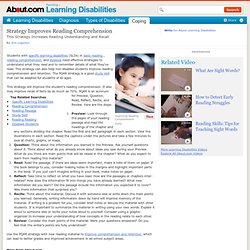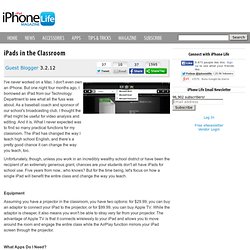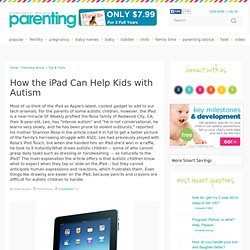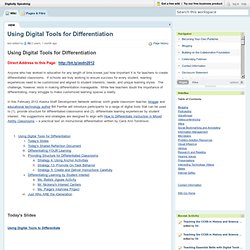

Special Needs. iPad & Autism. Choosing Texts and Curriculum. When children are struggling to learn, it is not always easy to determine the cause of their difficulties.

In some cases parents will question their own teaching capabilities, but that is not the most likely cause or problem. A proven successful choice for many children is loving one-on-one attention. In some cases, the problem may lie within the child -- there may be undiagnosed learning problems, or lack of confidence, or even lack of motivation. There is, however, a third possibility. Frequently a child's problems are due to a poor fit between the child and the textbooks from which he or she is working.
Whether or not children have diagnosed special needs or are simply special, it is important to provide optimal learning opportunities for them. Parents should look for several important characteristics when choosing material for the special needs student. Scope and Sequence Parents should then look at the sequence (order) in which new skills are introduced. Helps for Comprehension. Improve Reading Comprehension with the PQ4R Strategy. Students with specific learning disabilities (SLDs) in basic reading , reading comprehension, and dyslexia need effective strategies to understand what they read and to remember details of what they've read.

This strategy can also help non-disabled students improve reading comprehension and retention. The PQ4R strategy is a good study skill that can be adapted for students of all ages. This strategy will improve the student's reading comprehension. It also may improve recall of facts by as much as 70%. PQ4R is an acronym for Preview, Question, Read, Reflect, Recite, and Review. here are the steps: Preview: Look through the pages of your reading passage and read the headings of the chapter and any sections dividing the chapter. iPads in the Classroom. I've never worked on a Mac.

I don't even own an iPhone. But one night four months ago, I borrowed an iPad from our Technology Department to see what all the fuss was about. As a baseball coach and sponsor of our school's broadcasting club, I thought the iPad might be useful for video analysis and editing. And it is. What I never expected was to find so many practical functions for my classroom. Unfortunately, though, unless you work in an incredibly wealthy school district or have been the recipient of an extremely generous grant, chances are your students don't all have iPads for school use. Equipment Assuming you have a projector in the classroom, you have two options: for $29.99, you can buy an adaptor to connect your iPad to the projector, or for $99.99, you can buy Apple TV.
What Apps Do I Need? Notability: $0.99 The makers of Notability (the most popular productivity app in the App Store) market it as a "note-taking" app, but it's so much more than that. Guide to special needs apps. Complete guide to educational and special needs apps With over 300,000 apps it's easy to become overwhelmed by the number of app choices.

It's also easy to spend a small fortune on a lot of useless apps. As a special needs parent I wanted to get right to the "good stuff" and figured you did too. Check out our guide that breaks down the best of the apps by skill set so you can easily find and buy apps that most benefit your child. How the iPad Can Help Kids with Autism.
Most of us think of the iPad as Apple's latest, coolest gadget to add to our tech arsenals.

For the parents of some autistic children, however, the iPad is a near-miracle. SF Weekly profiled the Rosa family of Redwood City, CA; their 9-year-old, Leo, has "intense autism" and "he is not conversational, he learns very slowly, and he has been prone to violent outbursts," reported his mother Shannon Rosa in the article (read it in full to get a better picture of the family's harrowing struggle with ASD). Leo had previously played with Rosa's iPod Touch, but when she handed him an iPad she'd won in a raffle, he took to it instantly. What draws autistic children -- some of who cannot grasp daily tasks such as dressing or handwashing -- so naturally to the iPad? The main explanation the article offers is that autistic children know what to expect when they tap or slide on the iPad -- but they cannot anticipate human expressions and reactions, which frustrates them. A Checklist Approach to Reading Interventions.
- Top 10 iPad Tips & Tricks by David Kapuler. Using Digital Tools for Differentiation. Direct Address to this Page: Anyone who has worked in education for any length of time knows just how important it is for teachers to create differentiated classrooms.

If schools are truly working to ensure success for every student, learning experiences need to be customized and aligned to student interests, needs, and unique learning styles. The challenge, however, rests in making differentiation manageable. While few teachers doubt the importance of differentiating, many struggle to make customized learning spaces a reality. In this February 2012 Alaska Staff Development Network webinar, sixth grade classroom teacher, blogger and educational technology author Bill Ferriter will introduce participants to a range of digital tools that can be used to (1). provide structure for differentiated classrooms and (2). differentiate learning experiences by student interest.
Guide to special needs apps.